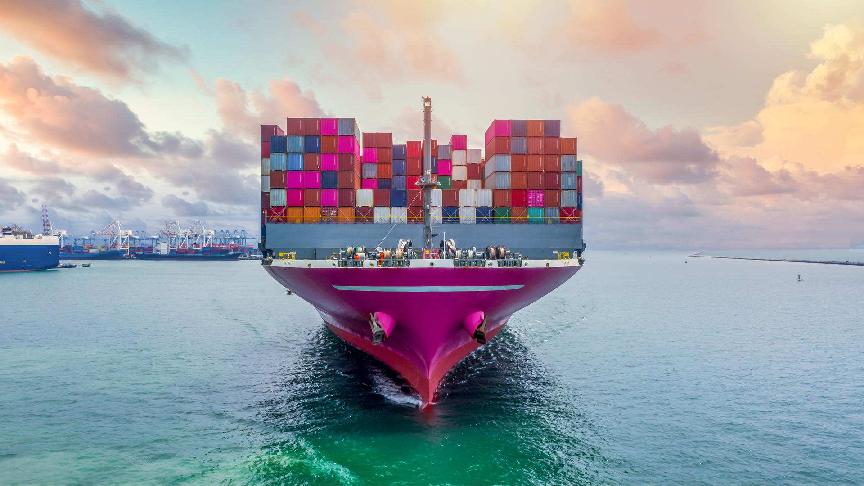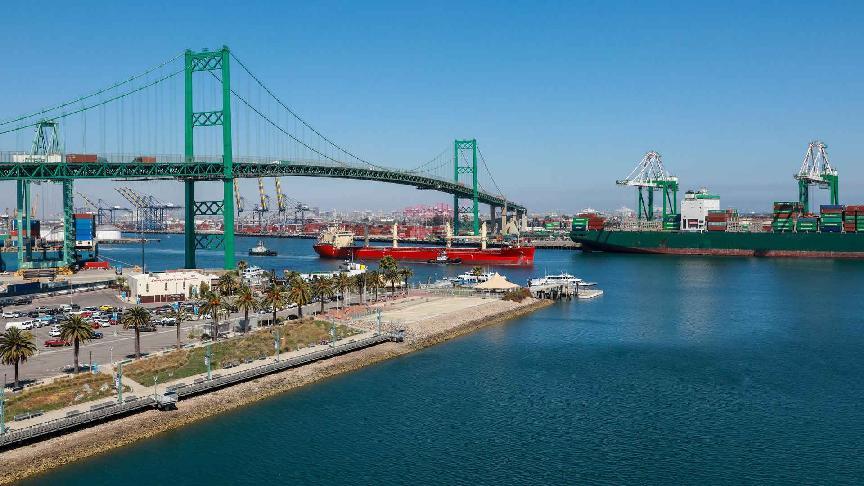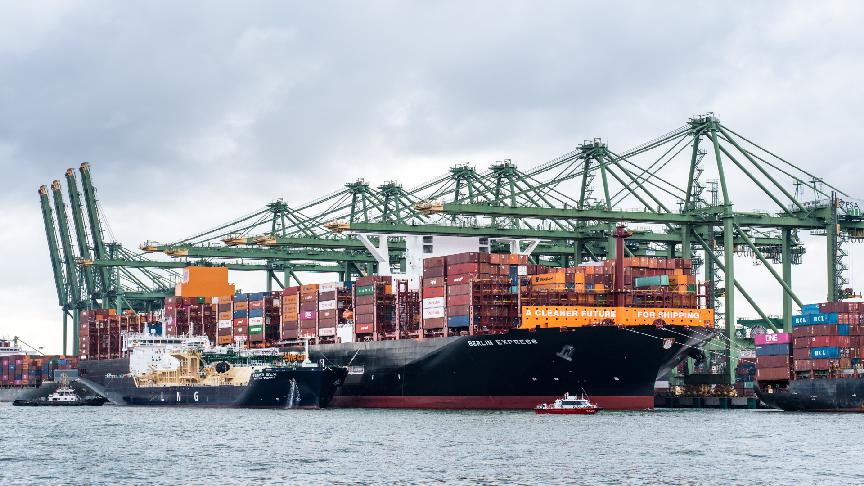21 November 2024 (Lloyd's List) - COMBINED cargo volumes at the ports of Los Angeles and Long Beach neared record levels in October, owing to a strong US economy, and a pull-forward of cargo due to expected tariffs and labour uncertainty at the US east and Gulf coast ports.
The two ports handled 1.89m teu between them, slightly below the all-time record of 1.92m teu reached during the pandemic-era supply chain crisis in May 2021.
The port of Long Beach accounted for 987,191 teu, its strongest-ever month on record. Los Angeles handled 905,026 teu, its strongest October on record. It also marked the first time the port of Los Angeles surpassed 900,000 teu for four consecutive months.
Imports at the San Pedro Bay ports reached a combined 950,303 teu, the third-strongest level on record.
“These robust, sustained volumes will likely continue in the coming months with strong consumer spending, an early Lunar New Year, importer concerns about unresolved east coast labor issues and the possibility of new tariffs next year that could drive up shipping costs,” port of Los Angeles executive director Gene Seroka said during a press briefing on Wednesday.
Los Angeles’ November volumes are expected to reach about 850,000 teu, putting the port on course to surpass 10m teu for the full year for the second time in its history.
“That would make for an extraordinary year,” said Seroka.
However, with an incoming president who’s promising unprecedented tariffs, the road ahead is bumpy.
“I suspect we’ll encounter some new headwinds that our industry would have to navigate,” Seroka said.
A ‘headache’ for shippers
The Port of Los Angeles’ press briefing featured Mary Lovely, a senior fellow at the Peterson Institute for International Economics and a professor emerita of economics in Syracuse University.
Seroka asked Lovely how she expects US trade policy to evolve under the Trump administration and when she expects changes to take effect.
“I think we should start with the three most important words today, which are: uncertainty, uncertainty, uncertainty. If I were to add one more, it would be disruption,” she answered.
“So, we’re looking ahead to a period that we think will be very active for trade policy and that’s going to cause a lot of headaches and rearrangements for shippers, as well as for managers of global supply chains.
“We expect that the new administration will get to work right away, particularly [with] tariffs on China. We think the president-elect will use the authority that has already been established under section 301… to at least begin to raise tariffs on China,” Lovely said.
After that, Trump will likely turn to other US trading partners, including those that have free trade agreements with the US, she said.
These protectionist policies will likely adversely impact trade flows and reduce the amount of containerised cargo coming in and out of the US – and carried by ocean carriers.
Importers of finished goods will incur higher costs that will be passed down to consumers, which could put downward pressure on import demand. In addition, manufacturers that import inputs for products that are ultimately exported will also have to contend with higher costs that will reduce their competitiveness. Meanwhile, retaliatory tariffs will also potentially reduce the competitiveness of US exports.
“We’ll definitely see an effect on trade flows, both imports and exports. The flows will decrease despite having what I think will be a fairly robust economy next year,” said Lovely.
“Our imports will be taxed, consumers will turn towards domestic goods or services, [and] our exports will be hurt because we’re going to see higher prices on the things that producers use to produce things in the United States.
“…A lot of what comes through the port of Los Angeles are in fact intermediary inputs used by American manufacturers to create goods here in the US. They’ll be hurt [by these price increases] and they will find in the global marketplace that their competitors are not hamstrung in the same way.
“So, I think we’re going to see an impact on both import flows and export flows.”
Lovely noted that while the US is the second-largest exporter globally of manufactured goods, neither the Trump nor Harris paid much attention to exports in their campaigns.
“That’s unfortunate, because our exporters are our biggest, most productive, most innovative companies. That’s not just me saying it - that’s fact,” she said.
“All of these policies really do handicap our exporters.”







